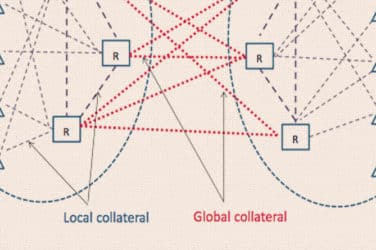
OTC reforms are paving the way for services that enable clearing firms and their customers to reduce the collateral they are required to maintain against open positions, paving the way for capital efficiencies.
“There’s a great deal of regulatory and commercial scrutiny around the setting of initial margin levels without them being punitively high,” said Michael Riddle, chief operating officer at Eris Exchange. “Ultimately, the venues that figure out how to offer appropriate margin offsets between asset classes will offer compelling value.”
Portfolio margining allows users of Eris Exchange’s benchmark swap futures to experience dramatic capital savings when trading these contracts along with portfolios of CME interest rate futures.
CME Clearing, which has long offered portfolio margining for correlated U.S. dollar-denominated interest rate derivatives, is extending portfolio margining to end users of Eris Exchange futures.
Eris Exchange is unique in allowing end users to minimize these additional costs through portfolio margining with CME futures, and by posting a wide variety of collateral that includes letters of credit and foreign sovereign debt, the company says.
“The advantage of trading interest rate swap risk in futures form allows for dramatic capital savings in posting of initial margin,” Riddle said. “CME offers up to a 90% discount on initial margin for customers holding positions at both Eris and CME.”
CME Clearing, which has long offered portfolio margining for correlated U.S. dollar-denominated interest rate derivatives, is extending portfolio margining to end users of Eris Exchange futures.
CME Clearing began providing portfolio margining of interest rate futures and cleared OTC interest rate swaps for house accounts in May 2012, and will begin offering the service for customer accounts later in the year.
According to a report by Finadium on collateral management, collateral required in the OTC derivatives market alone will see a growth of 41 per cent over the next 12-18 months, partly as a result of the structural changes taking place in the derivatives markets.
“The complexity introduced by the mixed clearing environment, coupled with the associated increase in call volumes and strains on the collateral supply, make it more important than ever that a firm’s collateral management operation is as efficient as it possibly can be,” said Ted Leveroni, executive director of derivatives strategy at post-trade services provider Omgeo.
A lack of automation and efficiency can open up a firm to a significant amount of risk, both in terms of counterparty credit risk and, possibly regulatory risk as well.
“Operational efficiency has always been important in collateral management,” said Leveroni. “However, one of the primary unintended consequences of Dodd-Frank will be an exponential increase in the number of daily collateral calls that a firm will need to manage.”
Omgeo has enhanced ProtoColl, its automated collateral management solution, to help market participants manage collateral and risk management operations ahead of the implementation of complex regulatory requirements for over-the-counter (OTC) derivatives clearing.
“The ProtoColl enhancements provide a single, holistic view of collateral exposures across bilateral and centrally cleared (CCP) OTC derivatives trades, as well as exchange traded derivatives,” Leveroni said. “Users can manage the entire collateral life-cycle with ProtoColl, allowing them to execute robust counterparty risk management procedures and demonstrate the results to regulators and investors.”





